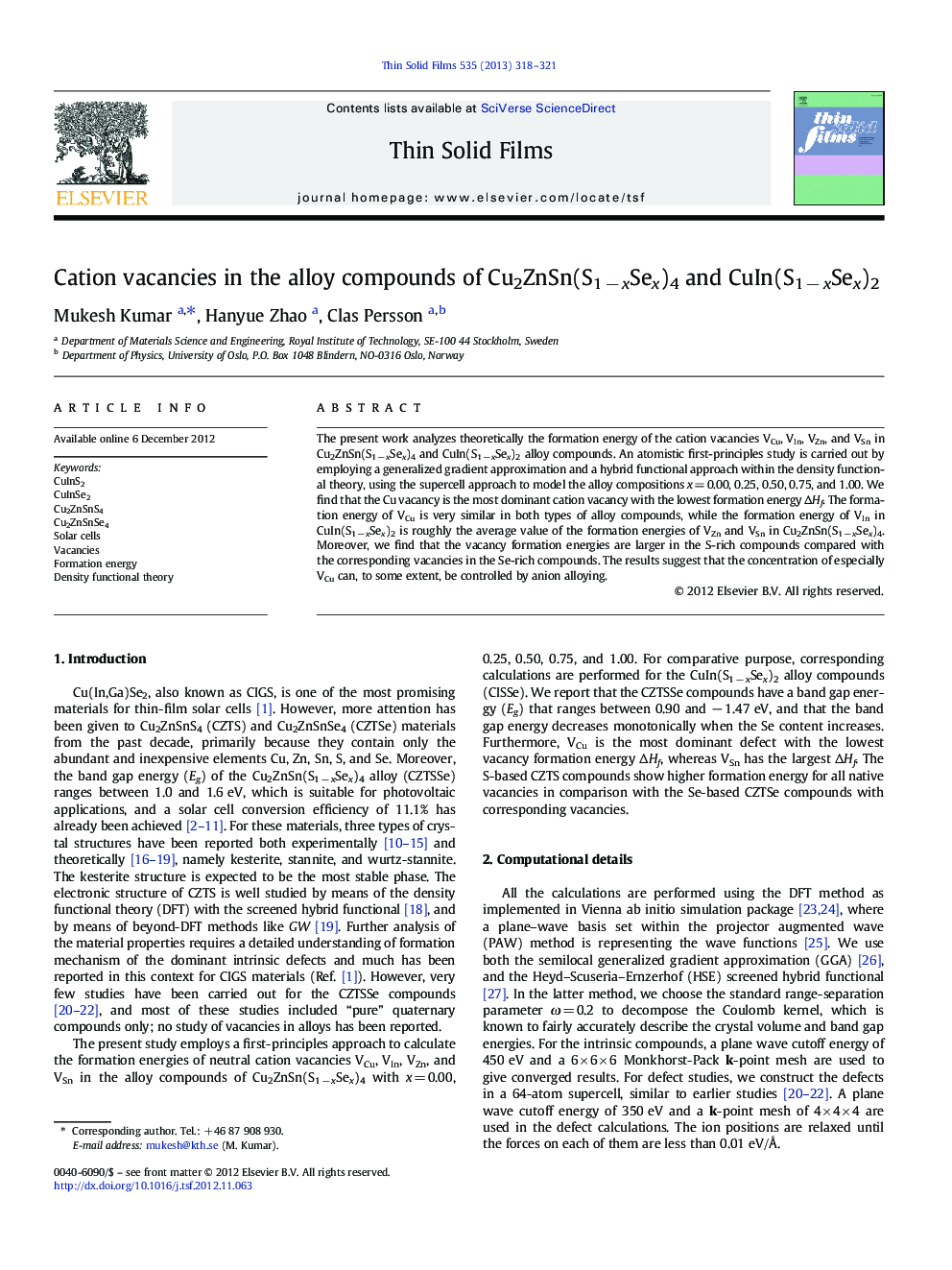| کد مقاله | کد نشریه | سال انتشار | مقاله انگلیسی | نسخه تمام متن |
|---|---|---|---|---|
| 1666213 | 1518069 | 2013 | 4 صفحه PDF | دانلود رایگان |

The present work analyzes theoretically the formation energy of the cation vacancies VCu, VIn, VZn, and VSn in Cu2ZnSn(S1 − xSex)4 and CuIn(S1 − xSex)2 alloy compounds. An atomistic first-principles study is carried out by employing a generalized gradient approximation and a hybrid functional approach within the density functional theory, using the supercell approach to model the alloy compositions x = 0.00, 0.25, 0.50, 0.75, and 1.00. We find that the Cu vacancy is the most dominant cation vacancy with the lowest formation energy ΔHf. The formation energy of VCu is very similar in both types of alloy compounds, while the formation energy of VIn in CuIn(S1 − xSex)2 is roughly the average value of the formation energies of VZn and VSn in Cu2ZnSn(S1 − xSex)4. Moreover, we find that the vacancy formation energies are larger in the S-rich compounds compared with the corresponding vacancies in the Se-rich compounds. The results suggest that the concentration of especially VCu can, to some extent, be controlled by anion alloying.
► Theoretically analyzed the formation energy (ΔHf) of neutral vacancies in ZnSn(S1 − xSex)4
► Anion alloying plays an important role in ΔHf of chalcopyrite's related materials.
► Concentration of cation vacancies can be controlled by anion alloying to some extent.
► Cu vacancy is the most dominant neutral defect.
► ΔHf is higher in S-rich compounds compared with the corresponding Se-rich compounds.
Journal: Thin Solid Films - Volume 535, 15 May 2013, Pages 318–321